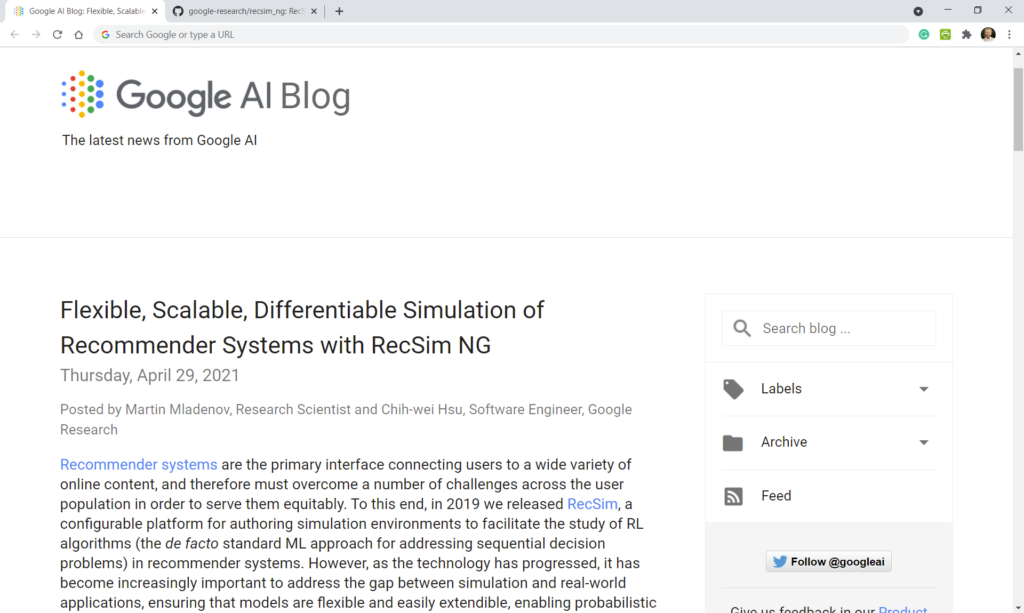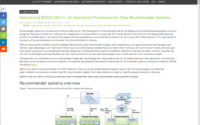Google AI releases ‘RecSim NG’, a “Flexible, Scalable, Differentiable Simulation of Recommender Systems”
One or two years ago, Google AI released RecSim — A Configurable Simulation Platform for Recommender Systems. Now, Martin Mladenov from Google AI announced the next generation (NG) of RecSim, i.e. RecSim NG.
RecSim NG is a powerful and flexible simulator designed to help researchers and practitioners in the field of recommender systems to model and test various scenarios and interactions. The simulator is implemented in Edward2 and TensorFlow, which are both powerful and efficient libraries for probabilistic programming, machine learning and deep learning. The simulator offers a general probabilistic programming language for agent-behavior specification, which allows for modeling the behavior of various actors such as recommenders, content consumers, content producers, and advertisers in a flexible and modular way.
One of the most significant improvements of RecSim NG over its predecessor is the introduction of the story API. This API allows the simulation of scenarios where an arbitrary number of actors interact with one another, enabling the flexible modeling of entire recommender ecosystems. This is a significant improvement over the traditional isolated user-recommender interaction setting, as it allows for modeling more complex and realistic scenarios.
Another important feature of RecSim NG is the introduction of a library of behavioral building blocks. These building blocks are similar to Keras layers and allow for quickly assembling complex models by using well-known modeling primitives. The library follows the object-oriented paradigm, and it uses entity patterns to encapsulate shared parameters that govern various agent behaviors, such as user satisfaction. Additionally, the library uses templates to define large populations of agents concisely, abstracting agent individuality without duplicating invariant behaviors.
RecSim NG is not only useful for generating Monte Carlo samples, but it also enables various other forms of probabilistic reasoning. The simulator’s model can be calibrated to observed data, allowing for data-driven simulation. RecSim NG makes it easy to implement various model-learning algorithms, such as expectation-maximization (EM) and generative adversarial training. In this way, it helps to bridge the so-called “sim2real” gap, which is the challenge of achieving simulation fidelity that is close to reality.




